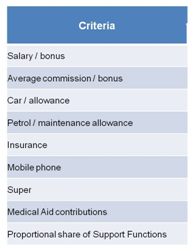
Product differentiation is getting harder, Me2 products are flooding the markets, quality is being commoditised, and as a result margins are being squeezed and value is at risk of being shed if we don’t know how to articulate the real value we deliver beyond product and price and demonstrate our competitive edge.
With so much choice and competitors fighting for our clients’ attention, it is critical that we find and define our competitive edge.
How do we define our competitive edge?
That depends on what we want to deliver to our customers and how we want to run our businesses.
Today, in business, we have two business choices:
- we can choose to run our business as the cheapest; OR
- we can choose to run a business that delivers real value at a reasonable margin.
That is it.
If we want to be the cheapest then we run our business accordingly and make sure we have the lowest Cost of Sale Activities (COSA*) commensurate with what we are selling. We need to make it easy and convenient for people to buy from us and keep it simple. That will be our competitive edge. There are plenty of business models that can run the lowest cost/cheapest model and if we want to adopt that model we need to be the best at running a high volume low cost business in the market of our choosing.
If we want to run a business where we deliver real value beyond product features and benefits then we need to clearly demonstrate our competitive edge and the value we deliver to our clients that our competitors cannot. We need to find that clear water that sets us apart from competitors and speaks clearly to our clients and prospects in language they understand.
Knowing our competitors on every level
We need to know when we are comparing apples with apples, and apples with other things. Knowing who we are competing against is critical for how we position ourselves with clients and prospects.
We need to be confident in knowing the similarities and the differences. There is no point trying to compete head to head with a ‘cheapest’ competitor if we are a ‘value-add’ company.
We will meet a variety of competitors:
- Direct – those who offer something similar to us where we are likely to compete head to head
- Indirect
- Disputers or Alternatives
Analysing our competitors.
If we are going to learn anything about selling effectively in today’s competitive environment, then we had better start learning to analyse our competitors.
Perhaps one of the greatest competitive advantages we can develop in our sales activity is investing as much time (in our pre-call research) on assessing competition to the sale, as we do in analysing and gathering information about our prospects.
The challenge facing salespeople is understanding what information is relevant, when information is nice to know, and when information is merely an overload or redundant.
Knowing about our competitor’s turnover, margins, etc. is nice to know. However, it’s not going to help us in presenting our company, products or services to the prospect.
 On the other hand, knowing about the products / services offered by rivals and how these compare with our own gives us critical information to position ourselves more effectively, as a better alternative, without having to knock our competitor.
On the other hand, knowing about the products / services offered by rivals and how these compare with our own gives us critical information to position ourselves more effectively, as a better alternative, without having to knock our competitor.
Here are eleven (11) key questions we ask to obtain information about our competitors and how we rate against them.
- Who are our competitors (or possible competitors) for this sales opportunity?
- What are their primary market objectives?
- What do they do well? (strengths of the companies; strengths of the sales force)
- What don’t they do well? (weaknesses of the companies; weaknesses of the sales force)
- What is the reputation of both the company and the salespeople in these competitive companies?
- What are the competitors’ pricing strategies – Do they generally discount, go for high price / low volume or low price / high volume?
- What are the competitors’ service reputations? Do these companies deliver on their promises?
- What are the competitors’ financial status – e. how healthy are these companies and how much financial backing do they have?
- What were the greatest, most recent wins and losses our competitors have had in their sales activity?
- What threat do they pose to our company / this sales opportunity?
- What is our competitive edge?
 This information helps us understand what likely challenges we are facing, even before we make our initial pitch to the prospect. As a result we are able to position our offer, company and products in the strongest light, without having to discuss competitors.
This information helps us understand what likely challenges we are facing, even before we make our initial pitch to the prospect. As a result we are able to position our offer, company and products in the strongest light, without having to discuss competitors.
*Cost of Sales Activity (COSA)
Cost of Sales Activity (COSA) is a model developed to ascertain the real cost of sales to the company, without clouding the issues with extraneous company and / or hidden marketing costs.
Remember everybody lives by selling something.
Author: Sue Barrett, www.barrett.com.au


New Article Email Notification